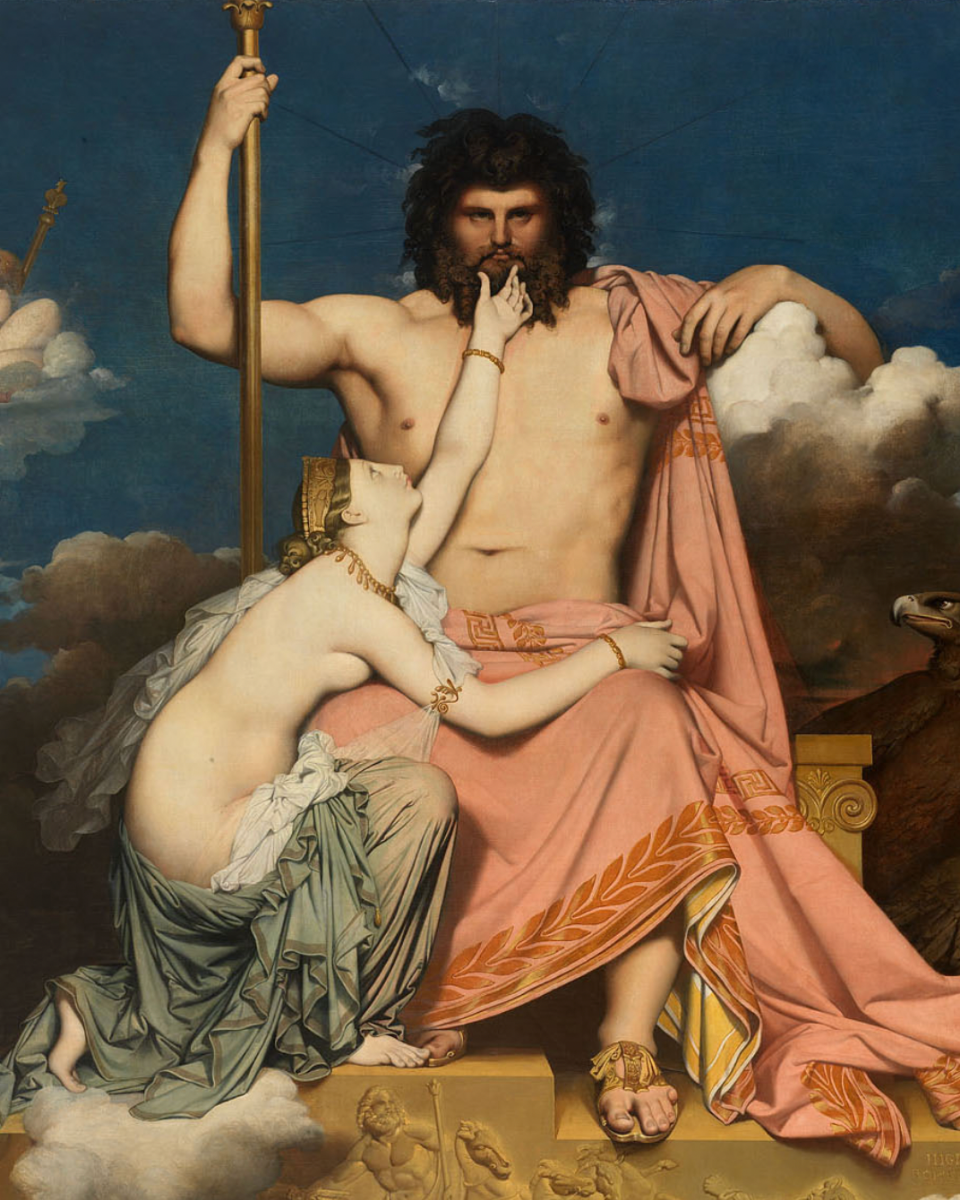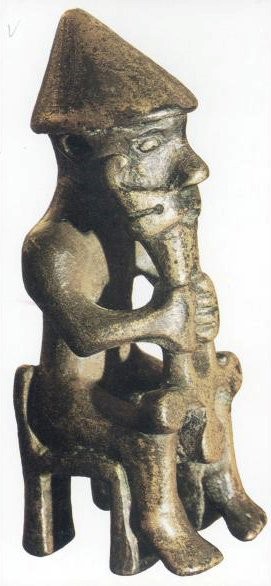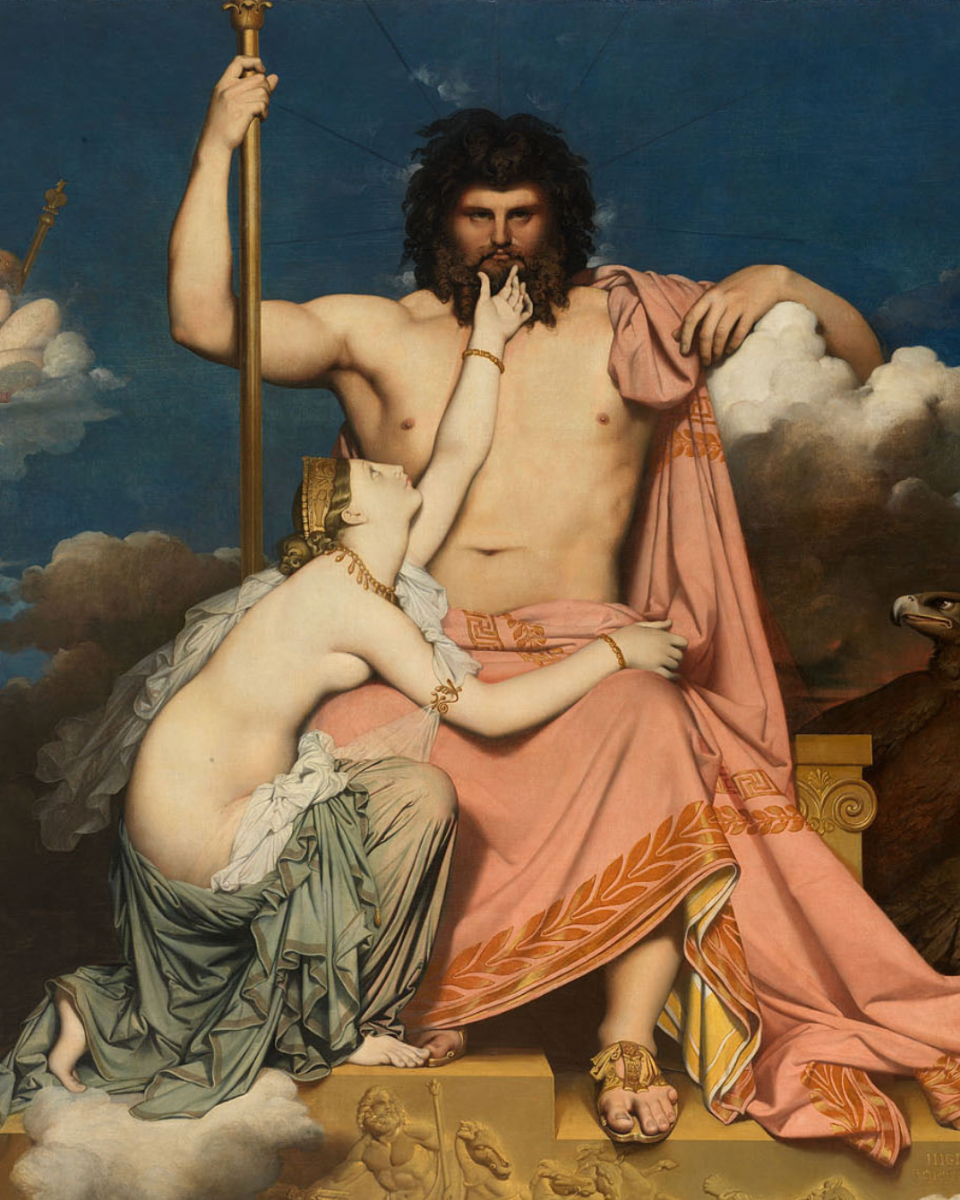
Since hair grows on the face of a young man at puberty just as he becomes capable biologically of siring a family and capable psychologically of taking social responsibility, the beard is a mark of masculine adulthood. Hence the male heads of pantheons are usually bearded. Indra, a thundering sky god like Thor and leader of the Vedic deities, had a beard. Zeus does not explicitly sport a beard in Homer but does have an important chin: Thetis ‘sat beside him with her left hand embracing his knees, but took him underneath the chin with her right hand and spoke in supplication’ (Iliad 1.500); Jean Auguste Dominique Ingres painted this scene and gave Father Zeus a big curly beard. And while the ancient Egyptians preferred to be clean-shaven, their male gods wore beards, as did their incarnate divine Pharaoh (who had to strap on a false beard for ceremonies). Thus, we observe a pattern of meaning: the hair on the lower part of a man’s face symbolizes the coming of age as well as the wisdom and authority that come with experience. There is something sacred about one’s beard, and one can swear by it. The Little Pig vows to the Wolf, ‘Not by the hair of my chinny chin chin.’

Yet Germanic fairy tales show that beards can also be the very part of a man that proves his stupidity. ‘Old Rinkrank’ was cruel to his princess wife until one day she trapped him by slamming the window down on his long gray beard; she released him only when he let her go home. Snow White and Rose Red, two helpful, innocent girls, were repeatedly berated by an odious old dwarf with a yard-long white beard, which he stupidly got caught in the crevice of a tree and then got tangled in some fishing line—until, at last, a helpful bear came along and killed him. And then, in a European folktale, ‘There was once a man who possessed beautiful houses in town and county, gold and silver table service, furniture and embroideries, and gilded coaches. But unfortunately this man had a blue beard. This made him so ugly and repulsive to look at that there was no woman and no girl who did not fly from him.’ The women who did agree to be his wife were slain by Bluebeard, a figure who has come to symbolize evil itself.


